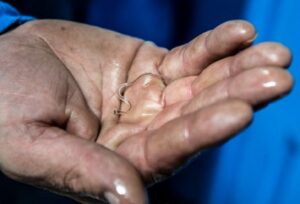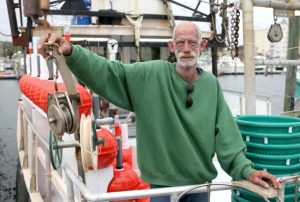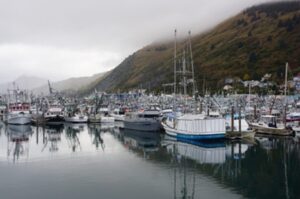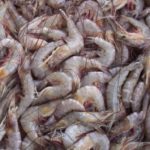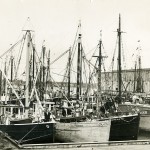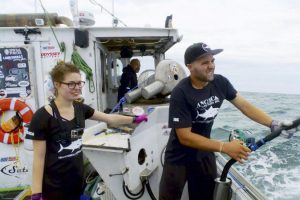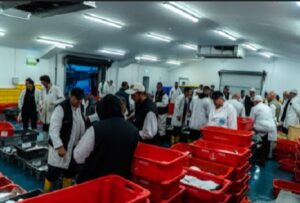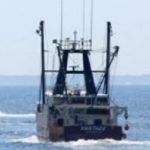Daily Archives: March 5, 2016
Chile fishermen protest fishing limits

Ret Talbot – Fishery Data versus Anecdote through the Lens of Sector Management
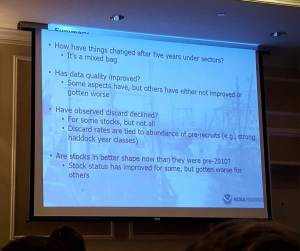 At this year’s Maine Fishermen’s Forum, many old themes are the topic of current conversations. Fisheries managers and scientists point to data that show a fishery resource squarely on the ropes, while many in the fishing industry maintain that there are more fishes in the water than any time in recent memory. Industry often views the current management system as one that forces fishers into a situation where they are “constantly trying not to catch fish” due to quotas imposed by managers based on science the industry views as suspect. The discrepancy between industry and managers–between anecdote and data–is troubling and continues to foment mistrust, frustration and outright anger. Read the rest here 13:19
At this year’s Maine Fishermen’s Forum, many old themes are the topic of current conversations. Fisheries managers and scientists point to data that show a fishery resource squarely on the ropes, while many in the fishing industry maintain that there are more fishes in the water than any time in recent memory. Industry often views the current management system as one that forces fishers into a situation where they are “constantly trying not to catch fish” due to quotas imposed by managers based on science the industry views as suspect. The discrepancy between industry and managers–between anecdote and data–is troubling and continues to foment mistrust, frustration and outright anger. Read the rest here 13:19
Scientists have routinely exaggerated the “evil twin of climate change” aka ocean acidification
 A new paper published in the ICES Journal of Marine Science puts the issue of “ocean acidification” to the test, and finds that there has been significant exaggeration in the issue. The paper is: Applying organized scepticism to ocean acidification research “Ocean acidification” (OA), a change in seawater chemistry driven by increased uptake of atmospheric CO2 by the oceans, has probably been the most-studied single topic in marine science in recent times. The majority of the literature on OA report negative effects of CO2 on organisms and conclude that OA will be detrimental to marine ecosystems. As is true across all of science, studies that report no effect of OA are typically more difficult to publish. Read the rest here 11:12
A new paper published in the ICES Journal of Marine Science puts the issue of “ocean acidification” to the test, and finds that there has been significant exaggeration in the issue. The paper is: Applying organized scepticism to ocean acidification research “Ocean acidification” (OA), a change in seawater chemistry driven by increased uptake of atmospheric CO2 by the oceans, has probably been the most-studied single topic in marine science in recent times. The majority of the literature on OA report negative effects of CO2 on organisms and conclude that OA will be detrimental to marine ecosystems. As is true across all of science, studies that report no effect of OA are typically more difficult to publish. Read the rest here 11:12
Is the clue to shrinking halibut in their stomachs — and those of arrowtooth flounder?
 Fish stomachs may help solve the mystery of why Alaska halibut today are so small for their age. Halibut weights are about a third of what they were 30 years ago, scientists have found. A culprit could be arrowtooth flounders, whose numbers have increased 500 percent over the same time to outnumber the most abundant species in the Gulf of Alaska — pollock. Fishermen for decades have claimed the toothy flounders, which grow to about 3 feet in length, are blanketing the bottom of the Gulf and many believe they are out-competing halibut for food. A study by Southeast Alaska researchers aims to find out. “People think that potentially arrowtooth are competing with halibut for space and/or prey,,, Read the rest here 10:04
Fish stomachs may help solve the mystery of why Alaska halibut today are so small for their age. Halibut weights are about a third of what they were 30 years ago, scientists have found. A culprit could be arrowtooth flounders, whose numbers have increased 500 percent over the same time to outnumber the most abundant species in the Gulf of Alaska — pollock. Fishermen for decades have claimed the toothy flounders, which grow to about 3 feet in length, are blanketing the bottom of the Gulf and many believe they are out-competing halibut for food. A study by Southeast Alaska researchers aims to find out. “People think that potentially arrowtooth are competing with halibut for space and/or prey,,, Read the rest here 10:04
2015 a half-billion dollar lobsterpalooza for Maine fishermen
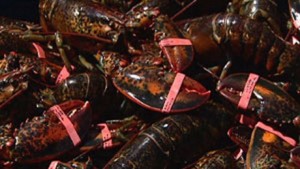 The Department of Marine Resources released its preliminary 2015 commercial fisheries landings Thursday night and the news was astonishing. According to DMR, the value of Maine’s commercially harvested marine resources topped $600 million in overall value in 2015. The total, $631,768,531, is an all-time high and an increase of more than $33 million over the previous record set in 2014. The largest single increase in value was in the state’s lobster fishery, which saw its total landed value jump by more than $37 million and the average per pound boat price increase by more than 10 percent, from $3.70 per pound in 2014 to $4.09 per pound last year. Read the rest here 08:59
The Department of Marine Resources released its preliminary 2015 commercial fisheries landings Thursday night and the news was astonishing. According to DMR, the value of Maine’s commercially harvested marine resources topped $600 million in overall value in 2015. The total, $631,768,531, is an all-time high and an increase of more than $33 million over the previous record set in 2014. The largest single increase in value was in the state’s lobster fishery, which saw its total landed value jump by more than $37 million and the average per pound boat price increase by more than 10 percent, from $3.70 per pound in 2014 to $4.09 per pound last year. Read the rest here 08:59
Southern New England Lobstermen Dispute Finding That Lobsters Are At Record Lows
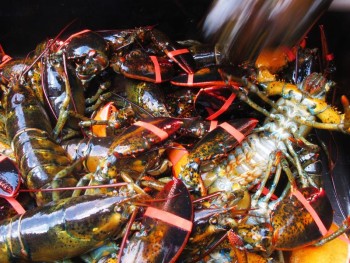 It’s been months since the Atlantic States Marine Fisheries Commission released its latest report on how lobsters are faring in the Atlantic Coast. But it’s still a hot topic among fishermen in the Ocean State. The latest lobster stock assessment found lobsters in the Gulf of Maine and Georges Bank are doing well; but lobsters in southern New England are not. Most southern New England fishermen disagree with that assessment, according to David Spencer, president of the and a lobster fisherman. Read the rest here 08:22
It’s been months since the Atlantic States Marine Fisheries Commission released its latest report on how lobsters are faring in the Atlantic Coast. But it’s still a hot topic among fishermen in the Ocean State. The latest lobster stock assessment found lobsters in the Gulf of Maine and Georges Bank are doing well; but lobsters in southern New England are not. Most southern New England fishermen disagree with that assessment, according to David Spencer, president of the and a lobster fisherman. Read the rest here 08:22
Northern California – Daily Salmon Count Predicts Grim Fishing Season
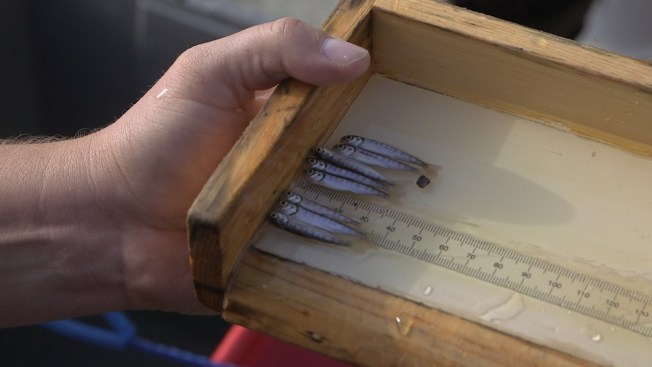 Every year about this time, state and federal fish regulators set recreational commercial fishing quotas for the upcoming salmon season which begins in April and May. The weighty decision is partially based on the number of salmon in the Sacramento River. The question is: How does anyone even know how many fish are actually in the river? The answer lies near the small Northern California town of Red Bluff, about a 45 minute drive from Shasta Dam. Beneath a diversion dam, giant metal buckets churn and rotate in the tide, scooping up anything heading down river — pointedly, tiny Chinook salmon fry making their way to the ocean. Video, Read the rest here 07:56
Every year about this time, state and federal fish regulators set recreational commercial fishing quotas for the upcoming salmon season which begins in April and May. The weighty decision is partially based on the number of salmon in the Sacramento River. The question is: How does anyone even know how many fish are actually in the river? The answer lies near the small Northern California town of Red Bluff, about a 45 minute drive from Shasta Dam. Beneath a diversion dam, giant metal buckets churn and rotate in the tide, scooping up anything heading down river — pointedly, tiny Chinook salmon fry making their way to the ocean. Video, Read the rest here 07:56

































